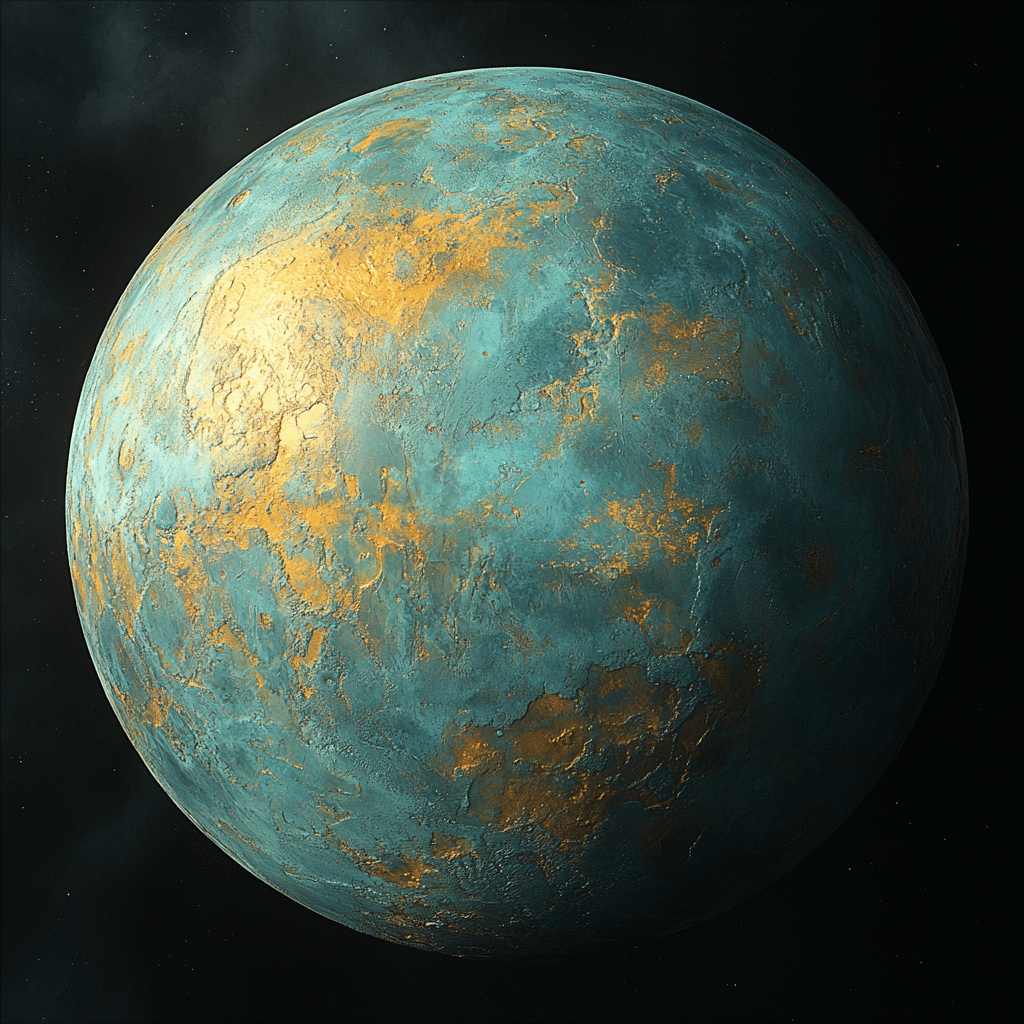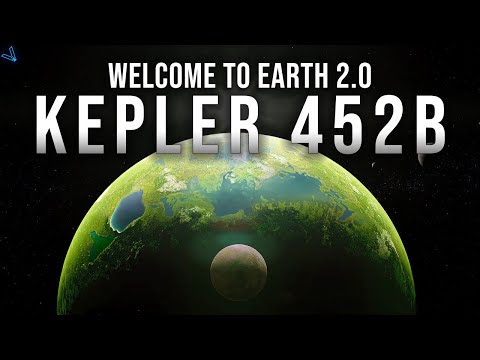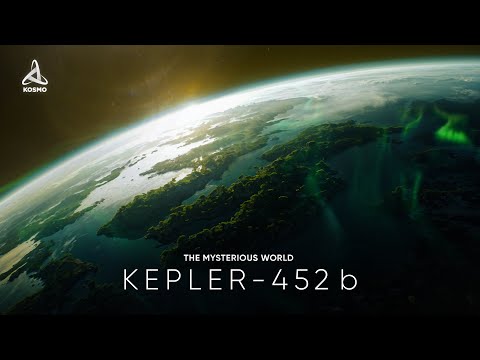The Discovery of Kepler 452b: A Milestone in Exoplanet Research
Back in 2015, a cosmic secret came to light through NASA’s Kepler Space Telescope, forever changing our understanding of galaxies far, far away. Meet Kepler 452b, dubbed “Earth’s Cousin.” Found nestled 1,400 light-years away in the constellation Cygnus, this super-Earth piqued worldwide curiosity for being the first potential rocky planet discovered in the habitable zone of a sun-like star. This particular finding put a fresh spin on exoplanetary research, sparking debates on what life beyond Earth might look like. With heated discussions over its potential to harbor life, Kepler 452b remains a hot topic in the scientific community.
Lying in the habitable region of its star, Kepler 452b invites comparisons to our Earth—not only in size but also in its revolutions. With a year lasting approximately 385 days, it closely mirrors our planet’s annual cycle, inviting speculation about climate systems similar to ours. However, it’s essential to remember that despite these parallels, the exact conditions on Kepler 452b remain uncertain. When considering risks like the potential greenhouse effect due to slightly more stellar energy, researchers are cautiously optimistic about its habitability.
The news of Kepler 452b’s discovery had earthbound technology enthusiasts exclaiming, unlocking potential paths to study and explore. This led to a surge in missions designed to probe the mysteries of distant worlds, with ambitions to answer the age-old question: Is Earth truly unique in its ability to support life? While much remains unknown, the excitement surrounding Kepler 452b marks a defining moment in our pursuit of understanding our universe.

Characteristics of Kepler 452b: What We Know So Far
Kepler 452b stands out in the universe with its impressive dimensions, boasting a radius 1.6 times that of Earth’s. Given its classification as a super-Earth, this exoplanet sparks intense interest in scientific circles. Its significant size suggests a meaningfully potent gravitational pull compared to our planet. When combined with its orbit in the star’s habitable zone, questions bloom about whether water—as we know it—might exist there. Yet due to the added gravitational force, the atmosphere could be denser, leading to sky-high surface pressures and unknown weather systems.
Scientists postulate that it might have a thick cloud cover, possibly explaining its cobalt-blue hue. However, the underlying atmospheric composition is still a cosmic mystery. While some speculate about a potentially stormy environment containing glassy clouds, others raise the possibility of an entirely alien atmosphere unlike Earth’s familiar oxygen-nitrogen mix.
Inquiries about its conditions have sparked continuous fascination. Would life, if present, follow a path like Earth’s evolutionary tale? Or could alternate life forms—unlike anything we’ve imagined—be thriving on this super-Earth cousin? Efforts are underway to unravel these riddles, using advanced tools and techniques, arousing hopes that the answers lie within our reach.

| Feature/Characteristic | Description |
|---|---|
| Name | Kepler-452b |
| Discovery | Announced by NASA’s Kepler Science Team on July 23, 2015 |
| Type | Super-Earth |
| Location | 1,400 light-years away in the constellation Cygnus |
| Distance from Earth | Approximately 1,400 – 1,800 light-years |
| Orbit | Completes a full revolution around its star every 385 days |
| Star Type | Orbits a G2V-type star, similar to the Sun, but 20% more luminous |
| Star Age | Approximately 6 billion years old, 1.5 billion years older than the Sun |
| Habitability Zone | Located within the habitable zone of its star, allowing potential for liquid water on its surface |
| Atmosphere | Possibly thick with clouds; unknown composition, unlikely to be breathable for humans |
| Energy from Star | Receives slightly more energy from its star than Earth, heightening the risk of a runaway greenhouse effect |
| Potential for Life | Considered to have spent 6 billion years in the habitable zone, offering a substantial opportunity for life should conditions be favorable |
| Physical Characteristics | Described as “Earth’s bigger, older cousin” |
| Travel Time from Earth | Over 26 million years with one of our fastest probes, New Horizons, traveling at 36,000 miles per hour (57,936 km/h) |
| Current Human Accessibility | Extremely unlikely that human beings will ever set foot on Kepler-452b due to the vast distance |
| Color | Cobalt blue, possibly from an atmosphere laced with clouds |
The Star Kepler 452: An Aging Twin of Our Sun
Kepler 452, the star anchoring this cosmic dance, shares a striking resemblance to our Sun in both size and temperature. However, it has a head start of 1.5 billion years, clocking in at a venerable age of about 6 billion years. This seniority has implications for the planet orbiting it, potentially influencing geological and atmospheric shifts over eons. With Kepler 452 shining 20% more luminous, scientists consider how such brightness would affect the planet’s surface and any potential habitability.
Diving into the evolutionary tale of Kepler 452 and its indirect kin offers glimpses of potential futures for our solar system. For instance, how has its advancing age influenced its planetary offspring? Are there tectonic wonders or atmospheric transformations hidden from our telescopic gaze? This aged star serves as a celestial crystal ball, possibly hinting at Earth’s future climatic or geological shifts.
Understanding the relationship between aging stars like Kepler 452 and their satellites may not just illuminate the cosmos but also act as a mirror reflecting our journey. Studying star-planet interactions helps contextualize the intricate relationships within solar systems, shedding light on our Sun’s trajectory and ultimately Earth’s destiny.

Potential for Life: A Closer Look at Habitability Factors
Kepler 452b’s place in the habitable zone whets the appetites of those dreaming of extraterrestrial life. Yet, while its prime real estate sparks dreams of new frontiers, it’s not entirely clear if it supports the conditions essential for life. Its impressive size hints at a greater gravitational pull, suggesting a potentially thicker atmosphere with higher surface pressure, which could have implications for its environment and climate.
The unknown atmospheric make-up adds another layer of suspense. Would it be an environment where Earth-like life could flourish, or would it require adaptations unknown to us? Role Of community in prevention holds a parallel here, as understanding local and terrestrial forms of life plays a key role in hypothesizing what might work on Kepler 452b. As the universe expands, so do the ideas about the different forms life could potentially take.
In our quest to uncover these planetary secrets, we anticipate the possibilities laid out by the advanced research and technological innovations emerging from new missions. Equipped with tools that can analyze atmospheric compositions and surface characteristics, we edge closer to the cosmic truth. And with these possibilities unfolding, we continue to search for signs of life, cautious yet ever hopeful.

Advanced Research and Technological Innovations
As technology bounds forward, opportunities to further explore Kepler 452b abound. Missions like the James Webb Space Telescope, alongside upcoming projects such as the Nancy Grace Roman Space Telescope, unleash capabilities that were unthinkable during Kepler 452b’s initial discovery. Through innovations that work akin to business growth Strategies, astronomers are empowered with the means to explore pioneering questions about these celestial neighbors.
Across these vast cosmic distances, precise measurement and observation tools are vital. They open new doors for confirming atmospheric compositions and weather patterns beyond speculative consensus. Unraveling the astrophysical elements of Kepler 452b, these advanced tools and techniques redefine our relationship with the cosmos and make the improbable seem possible.
As we delve deeper into the mysteries of far-flung worlds, these groundbreaking strides lay the foundation for future exploration. Technology may one day transform our space dreams into possibilities, bringing unknown worlds closer to our realm of understanding—and perhaps even within our reach.

The Search for Kepler 452b’s Neighbors: Understanding Its System
Kepler’s mission didn’t just stop at 452b. Our cosmic exploration extends to its celestial neighborhood, sparking interest in the dynamics shaping their orbits and interactions. The search for Kepler 452b’s neighbors offers a tantalizing glimpse into potential planetary companions circling Kepler 452. By examining these contemporaries, scientists hope to better understand their place in the broader cosmic picture.
Studying the Kepler 452 system draws parallels to star systems closer to home. How might these neighboring planets affect Kepler 452b’s orbit or contribute to atmospheric exchanges? Understanding these interplanetary relationships is crucial when considering potential habitability and complex life-supporting systems.
Discovering the interplay within these extraterrestrial spheres enhances our appreciation for the vastness of the universe. Just as the presence of Lamar Jackson 49ers adds complexity to the sports world, these neighboring planets contribute layers to the broader canvas—painting a dynamic picture that encourages us to observe, analyze, and continuously explore the wonders of the cosmos.
Implications for Earth and Future Space Exploration
Kepler 452b provides more than a glimpse of what lies beyond our solar system—it serves as a cosmic compass, guiding our understanding of Earth’s potential paths. Examining its features helps us reflect on our planet’s place in the universe. With an atmosphere possibly similar yet distinct from Earth’s, it paves the way for discussions on how earthly conditions might evolve or parallels in environmental challenges might arise.
The planetary insights gained from observing Kepler 452b feed into our strategic approach toward sustainable development here at home. Navigating these cosmic mysteries may unveil keys essential for fostering a balanced, thriving Earth. As we face the ever-growing need for solutions, the universe beckons us to innovate and look inward as much as we look outward.
Beyond implications for our planet, the discovery of Kepler 452b advances ambitions for broader space exploration. With its lessons lingering in our thoughts, we stand on the edge of the precipice, contemplating the broader journey of existence. Whether inspiring new tech or forging pathways for interstellar travel, its influence echoes across disciplines, energizing humanity’s dreams of cosmic escapades.
Envisioning the Future: Kepler 452b and Beyond
The saga of Kepler 452b lights the way towards new cosmic adventures and discoveries. It rekindles the age-old curiosity that drives us to explore and transcend our world. Through thoughtful observation and scientific inquiry, this super-Earth cousin will continue to shape our perspective on life, the universe, and everything in between.
Our journey in the cosmos, bolstered by Kepler 452b’s allure, ignites a fresh epoch in exploration. With ambitions fueled by a combination of imagination and technological prowess, humanity stands ready to confront the mysteries of the universe. As we unravel these celestial stories, the broader understanding we gain fosters growth within our communities, communities strengthened by Lumumba Shakur, while reinforcing the resilience and adaptability that lie at the heart of our continued quest to discover who we are—and aren’t—mirroring across the stars.
In this dance with the stars, Kepler 452b remains a steady partner, drawing us into a waltz of exploration and understanding. It challenges our perceptions, goals, and aspirations. Yet, it also promises adventures untold as we chart new courses across the galactic seas, ever driven by that irresistible urge to wonder: is anybody out there?
Discovering Kepler 452b
A Cosmic Gem
Well, have you ever fancied the idea of another Earth-like planet hanging out light years away? Enter Kepler 452b, often dubbed Earth’s “distant cousin,” which orbits its star in the habitable zone—where conditions might be just dandy for water to exist. This super-Earth is about 1,400 light-years from us, nestled in the Cygnus constellation. Surprised? Well, brace yourself: Kepler 452b is about 60% larger than Earth, earning its moniker as a super-Earth. Scientists have nailed down its size by calculating the Points To percent differences in measurements, revealing insights into its possible rocky composition.
Planetary Real Estate
As you might wonder, what’s it like on Kepler 452b? Assuming similar conditions to our home planet, it’d be an enviable piece of cosmic real estate. Temperatures might be tipping the perfect scale for life. However, don’t go packing your bags yet. The whole idea of reaching there is another story altogether, as transporting humans such a measure of distance is still unfathomable without the aid of speculative sci-fi tech. Just as Los AngelesLAX airport Evacuated travelers can attest to the challenges of travel, interstellar voyages present hurdles we’ve barely begun to tackle.
Starry Companions and Mystery
Kepler 452b orbits a star reminiscent of our sun, though it’s 1.5 billion years older—a wise ancient compared to our lively sun. Imagine what stories it could tell; perhaps it’s seen more than just its share of cosmic spectacles. Intriguingly, the gravitational pull from an older star can impact planet stability and orbit, adding layers of complexity in understanding such celestial bodies. Still, some mysteries surrounding this super-Earth cousin make scandals back home, like the infamous Casey Anthony dad case, seem straightforward by comparison.
From Dream to Reality
Dipping into the quirks and potential of Kepler 452b leads one to envision possibilities of what life might look like on other worlds. Thoughts of encountering new life-forms or strange ecosystems fill the imagination. But, beware! Space endeavors can be tricky, just like the financial frauds we’re all too wary of, akin to what avoids What Is wire fraud. Crafting well-laid plans today might one day help humanity reach Kepler 452b and beyond, bringing us closer to unraveling the wonders of our universe, one fantastic world at a time.

Is Kepler-452b habitable for humans?
Kepler-452b isn’t exactly the kind of place where humans could just pack up and move. While it’s in a location that might support water, the planet might have a runaway greenhouse effect because it’s soaking up more energy from its star than Earth does. That doesn’t sound too cozy for human life.
Does Kepler-452b have oxygen?
Nobody knows for sure if Kepler-452b has oxygen. It’s like a big cosmic mystery because we haven’t figured out what its atmosphere is made of. Since it’s so far away and our instruments can’t sniff the air, guessing its composition is practically like playing a game of blackjack.
How long would it take to travel 1400 light years?
Traveling 1,400 light-years might as well be mission impossible for us right now. With New Horizons, one of our speedier space probes, it would take an unbelievable 26 million years to get there. We’re definitely not packing our bags for that trip anytime soon!
Will NASA go to Kepler-452b?
As exciting as it sounds, NASA won’t be sending people to Kepler-452b. The sheer distance of 1,400 light-years is a crazy-long trek, and our current tech just isn’t up for that kind of journey. We’re better off sticking to exploring our cosmic neighborhood for now.
How long is 1 year on Kepler-452b?
One year on Kepler-452b lasts about 385 Earth days. So, if you were living there, you’d be celebrating New Year’s a bit later than we’re used to here on Earth, giving you extra time to stick to those New Year’s resolutions!
How long would it take to get to Kepler-452b at the speed of light?
Zipping through space at the speed of light is still a fantasy for us mere mortals, but in theory, it would take 1,400 years to travel 1,400 light-years. That’s a bit out of our league with our current technology.
Is water available on Kepler-452b?
It’s not clear if Kepler-452b has water available. Since we’re peeking at it from such a distance, it’s more about informed speculation right now. Scientists believe that being in the habitable zone might mean liquid water could exist, but we’ve yet to confirm it.
Is Earth 2.0 real?
When scientists talk about Earth 2.0, they often mean planets like Kepler-452b that are similar in some ways to Earth. Finding a true Earth 2.0 would mean it’s pretty much a clone of our planet, which we haven’t found just yet. Kepler-452b is like Earth’s bigger, older cousin but that’s it for now.
Can Kepler support life?
Kepler-452b might support life, but we’re not sure. It’s in the so-called habitable zone, where conditions might allow for liquid water, and it’s been chilling there for billions of years. However, the harsh conditions such as potentially runaway greenhouse effect are still massive hurdles to life as we know it.
Is Kepler-452b in the Milky Way?
Kepler-452b is definitely hanging out in the Milky Way, alongside our solar system and countless other stars and planets. It’s located in a region of our galaxy that’s about 1,400 light-years from us, in the constellation Cygnus.
What is the closest habitable planet to Earth?
The closest potentially habitable planet to Earth is likely Proxima Centauri b, situated just over four light-years away. That sounds far, but it’s practically a stone’s throw in cosmic terms compared to places like Kepler-452b.
Does Kepler-452b have a moon?
There’s no concrete evidence pointing to Kepler-452b having a moon. From our vantage point and with current technology, spotting moons around planets that far away is quite the challenge, so we’re still in the dark on that one.
Could Kepler-452b support life?
All signs indicate Kepler-452b is a fascinating candidate, but whether it could really support life is still up in the air. Being in the habitable zone means it might have all the right ingredients for life, like Earth once did, but we’re missing crucial details about its atmosphere and surface conditions.
Why is Kepler-452b not habitable?
Kepler-452b’s potentially intense greenhouse effect is a real party pooper for habitability. While it’s chilling in the habitable zone, the planet’s getting more energy from its star than Earth does, which might make it way too hot for comfort, not the ideal recipe for habitability.
Does Kepler-452b have radiation?
There’s not much concrete info about radiation levels on Kepler-452b. That said, with it orbiting a star quite similar to our Sun, it’s safe to guess there’s some radiation. However, without knowing the specifics of its magnetic field or atmospheric protection, it’s all educated guesswork.
Can Kepler support human life?
For now, it seems Kepler-452b is off the list for supporting human life. While it might have earth-like features, the thick atmosphere and energy absorption suggest it could be a bit of a pressure cooker. Not exactly hospitable for humans as far as we know.
What is the closest habitable planet for humans?
Currently, Proxima Centauri b is the closest potentially habitable planet for humans. It’s about 4.24 light-years away, orbiting our closest neighboring star, and it’s speculated to have conditions that might support life, though we still have a lot to learn about this distant neighbor.
Does Kepler-452b have radiation?
As for radiation on Kepler-452b, it orbits a star like our sun, which naturally suggests some level of exposure to radiation. Without detailed studies of its atmosphere and its ability to shield against radiation, we can only hypothesize about its environment.
Which other planet can humans survive?
If you’re picking a planet for a potential human visit with current knowledge, Mars tops the list. It’s already being explored by rovers, and scientists have their eyes on it for future human missions due to its relatively mild conditions and the presence of water ice. Mars isn’t a paradise, but it’s the most practical choice given what we know and where we can realistically reach.



























